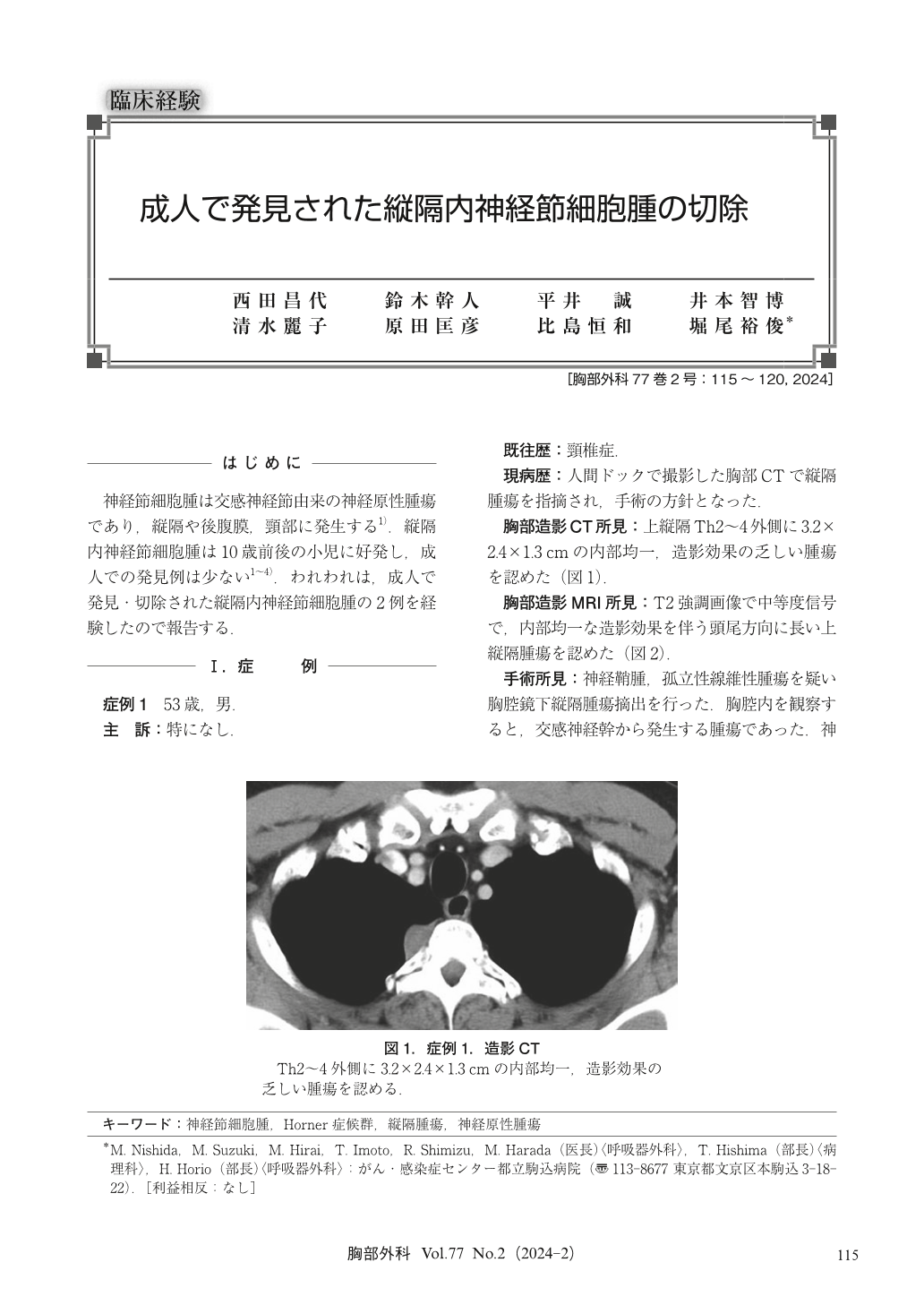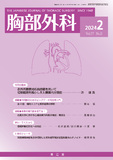Japanese
English
- 有料閲覧
- Abstract 文献概要
- 1ページ目 Look Inside
- 参考文献 Reference
神経節細胞腫は交感神経節由来の神経原性腫瘍であり,縦隔や後腹膜,頸部に発生する1).縦隔内神経節細胞腫は10歳前後の小児に好発し,成人での発見例は少ない1~4).われわれは,成人で発見・切除された縦隔内神経節細胞腫の2例を経験したので報告する.
A ganglioneuroma is a rare, benign, neurogenic tumor originating from the sympathetic ganglion. Mediastinal ganglioneuroma are mostly detected in children, typically around 10 years of age, and are rarely identified in adults. Herein, we report two surgically resected cases of mediastinal ganglioneuroma in adults. In Case 1, a 53-year-old man, without any symptom, underwent a computed tomography, revealing a 3.2 cm well-defined paravertebral superior mediastinal tumor with long craniocaudal axis. In case 2, a 29-year-old woman presented with newly-developed ptosis and a history of left-sided facial hypohidrosis since the age of 10. Chest computed tomography (CT) revealed a 7.8 cm well-defined paravertebral superior mediastinal tumor with long craniocaudal axis. Both patients were initially suspected to have neurogenic tumors, particularly schwannomas. They underwent mediastinal tumor resections, requiring sympathetic nerve trunk dissection. Pathological examination confirmed the diagnosis of ganglioneuromas in both cases. Mediastinal ganglioneuroma must be differentiated from schwannoma, the most common neurogenic tumor in adults. Unlike schwannoma, ganglioneuroma cannot be enucleated, therefore attention should be focused on complications associated with sympathetic nerve trunk dissection, such as Horner’s syndrome, hyperhidrosis, and arrhythmia. Identifying this rare entity and its characteristic imaging aids in preoperative differentiation, strategizing surgical approaches, and predicting complications.

© Nankodo Co., Ltd., 2024


